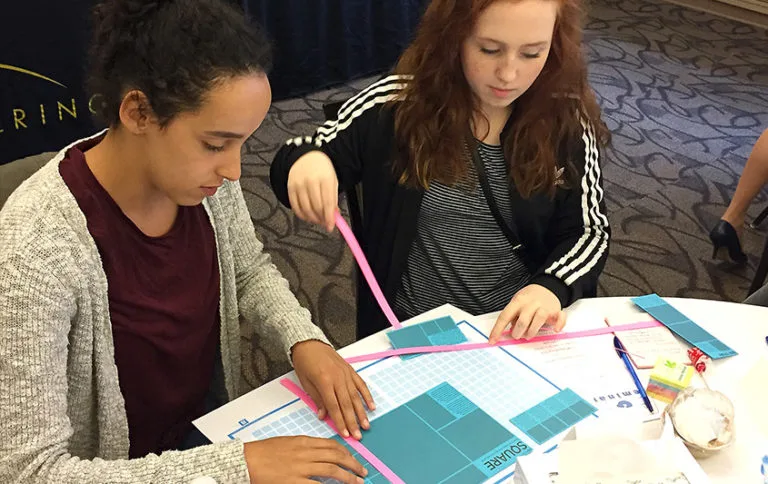Yearbooks are more than just a collection of photos and memories; they are a cherished keepsake that captures the essence of a school year. Creating a yearbook that stands out and sells well requires innovative marketing strategies. We will explore creative ways to market yearbooks, ensuring they reach the hands of students, parents, and faculty members who will treasure them for years to come. Let’s dive into the world of yearbook marketing with strategies that are both engaging and effective.
Understanding Your Audience
Identifying Key Demographics
Before you start marketing your yearbook, it’s essential to understand your audience. Typically, your primary audience will be students, followed by parents and faculty members. Each group has different motivations for purchasing a yearbook.
Students want to relive memories, parents want to capture milestones, and faculty members often buy yearbooks for archival purposes.
Tailoring Messages
Once you’ve identified your audience, tailor your marketing messages to resonate with each group. For students, highlight fun events, candid photos, and exclusive content.
For parents, emphasize the sentimental value and the importance of capturing precious moments. For faculty, focus on the yearbook’s role in documenting the school’s history.
Creating Compelling Content
Deep Dive into Storytelling Techniques
Storytelling is a powerful tool that can transform your yearbook from a simple collection of photos into a captivating narrative of the school year. To make your storytelling more strategic and effective, consider focusing on thematic storytelling.
Identify key themes that defined the school year, such as resilience, unity, or innovation. Weave these themes throughout the yearbook, using them to frame sections and highlight specific events or achievements.
This thematic approach not only makes the yearbook more cohesive but also resonates more deeply with readers, creating a lasting emotional impact.
Enhancing Visual Appeal with Professional Techniques
Visual content is the backbone of any yearbook, and using professional techniques can elevate its appeal significantly. Invest in professional photography training for your yearbook team or hire a professional photographer for major events.
High-quality photos can make a significant difference in the yearbook’s overall look and feel.
Utilizing User-Generated Content
Leveraging user-generated content can greatly enhance the richness and authenticity of your yearbook. Encourage students to submit their own photos, stories, and artwork.
Create a submission platform that is easy to use and accessible to all students. Promote this initiative through social media, school newsletters, and announcements to maximize participation.
Interactive and Multimedia Content
Integrating interactive and multimedia content can make your yearbook more dynamic and engaging. Consider adding QR codes that link to exclusive online content such as videos, interviews, and photo galleries.
These QR codes can be strategically placed next to related content in the yearbook, providing an enhanced experience for readers.
For instance, include a QR code next to the sports section that links to highlight reels of games, or next to the drama club pages that lead to behind-the-scenes videos of their performances.
These multimedia elements add a new dimension to the yearbook, making it a more immersive and interactive keepsake.
Incorporating Diverse Perspectives
A yearbook should reflect the diversity of the school community. Make a strategic effort to include a wide range of perspectives and voices.
This includes ensuring representation from different grades, clubs, sports teams, and cultural backgrounds. Conduct interviews and feature stories from students and faculty who have unique experiences or achievements.
To manage this effectively, create a content calendar that outlines key features and ensures a balanced representation. Assign specific sections to team members who can gather stories and photos from various groups.
This approach not only enriches the content but also ensures that every part of the school community feels included and valued.
Leveraging Different Marketing Channels
Social Media
Social media platforms like Instagram, Facebook, and TikTok are perfect for reaching students. Create a dedicated yearbook account and post regular updates, behind-the-scenes content, and countdowns to build excitement.
Encourage students to share their own photos and memories using a unique hashtag.
Email Marketing Campaigns
Email marketing is an effective way to reach parents and faculty, and a strategic campaign can drive significant yearbook sales. Develop a series of emails that gradually build excitement and provide valuable information.
Start with an introductory email that announces the yearbook and its unique features. Follow up with emails that highlight different sections of the yearbook, share testimonials from past buyers, and offer exclusive sneak peeks.
School Website and Newsletters
Utilize the school’s website and newsletters to reach parents and faculty. Include banners and articles about the yearbook in the newsletter. Feature testimonials from previous years to highlight the yearbook’s value.
In-School Promotions
Host events and activities within the school to promote the yearbook. Set up booths during lunch breaks where students can view sample pages and place orders.
Organize contests and giveaways related to the yearbook, such as a photo contest where the winning photo gets featured in the yearbook.
Leverage school assemblies and daily announcements to promote the yearbook. These platforms provide a captive audience and a direct way to communicate with students and faculty.
During assemblies, showcase the yearbook’s highlights through presentations and short videos. Feature testimonials from students and teachers about why the yearbook is a must-have.
SMS Marketing
SMS marketing is a direct and personal way to reach your audience. Send timely and concise text messages to remind parents and students about yearbook order deadlines, special promotions, and events.
Ensure that your messages are clear and include a direct link to the ordering page.
To avoid overwhelming your audience, use SMS sparingly and strategically. Reserve it for important updates and last-minute reminders. Offer an opt-in option where recipients can choose to receive SMS notifications about the yearbook.
This ensures that your messages are welcomed and more likely to be acted upon.
Engaging with Your Audience
Interactive Content
Create interactive content to engage your audience. Polls and quizzes about favorite school moments can be shared on social media and the school website.
Interactive content not only keeps your audience engaged but also provides valuable insights into what they want to see in the yearbook.
Personalized Marketing
Personalization can significantly boost yearbook sales. Send personalized emails to parents with their child’s name and photo, reminding them to order a yearbook.
Offer customizable yearbook options where students can add their own photos and messages, making the yearbook more personal and valuable.
Special Promotions and Discounts
Early Bird Offers
Offer early bird discounts to encourage early purchases. Promote these offers through all available channels, emphasizing the limited-time nature of the discount. Early bird offers not only drive early sales but also help gauge interest and plan accordingly.
Bundling Deals
Create bundling deals that add value. For example, offer a discount on school merchandise when purchased with a yearbook. Bundling deals can make the yearbook purchase more appealing by providing additional value.
Building a Strong Brand Identity

Defining Your Unique Value Proposition
To build a strong brand identity for your yearbook, start by defining your unique value proposition (UVP). Your UVP should clearly articulate what sets your yearbook apart from others and why it’s worth purchasing.
This could be anything from the quality of the content, the inclusion of unique features like augmented reality, or the level of personalization available.
Work with your yearbook team to identify the core strengths and distinctive elements of your yearbook. Conduct surveys or focus groups with students, parents, and faculty to gather insights on what they value most in a yearbook.
Use this information to craft a compelling UVP that resonates with your audience and differentiates your yearbook from competitors.
Consistent Visual and Verbal Branding
Consistency is key in building a recognizable and trustworthy brand. Ensure that all your marketing materials, from social media posts to printed flyers, follow a cohesive visual and verbal style.
This includes using the same colors, fonts, and design elements across all platforms. Develop a brand style guide that outlines these elements, along with guidelines on tone, messaging, and imagery.
For verbal branding, adopt a consistent tone of voice that reflects the spirit of your school and the unique character of your yearbook. Whether it’s fun and casual or formal and nostalgic, your tone should be consistent across all communications.
This consistency helps build a strong brand identity and ensures that your audience always recognizes and trusts your messaging.
Engaging Visual Design and Packaging
Invest in high-quality design and packaging to enhance the yearbook’s brand identity. The cover design should be visually striking and reflect the yearbook’s theme and the school’s spirit.
Consider using premium materials, such as embossed lettering or glossy finishes, to give the yearbook a luxurious feel.
The internal layout should be visually appealing and easy to navigate. Use consistent design elements, such as color schemes, typography, and graphic styles, to create a cohesive look.
High-quality design and packaging not only make the yearbook more attractive but also reinforce its value and the effort put into its creation.
Consistent Branding
Brand consistency is crucial in creating a recognizable and trustworthy yearbook. Develop a unique logo and tagline for the yearbook that resonates with the school spirit.
Use the same colors, fonts, and styles across all marketing materials to create a cohesive look. Consistent branding helps in establishing the yearbook as a premium product that everyone will want to own.
Emotional Connection
Creating an emotional connection with your audience can significantly boost sales. Share heartfelt stories and testimonials from previous yearbook buyers about what the yearbook means to them.
Use quotes from students and teachers that reflect the sentimentality and value of the yearbook. Emotional appeals can be particularly effective in getting parents and students to see the yearbook as more than just a book, but a cherished memento.
Collaborating with the School Community
Building a strong brand identity for your yearbook involves the entire school community. Engage students, parents, and faculty in the yearbook creation process to foster a sense of ownership and pride.
Organize brainstorming sessions, content creation workshops, and feedback meetings to involve them actively.
Utilizing Influencers and Ambassadors
Student Ambassadors
Leverage the influence of popular students to promote the yearbook. Choose a few enthusiastic students who are well-connected and active on social media to be yearbook ambassadors.
They can share their experiences, post about the yearbook on their social media, and encourage their peers to purchase a copy. Peer recommendations are highly influential among students.
Faculty Involvement
Involve teachers and staff in the promotion process. Teachers can mention the yearbook in their classes, share their excitement about it, and encourage students to buy it.
Faculty endorsements can add a layer of credibility and importance to the yearbook, making it more appealing to both students and parents.
Engaging Through Events
Yearbook Launch Party
Host a launch party to reveal the yearbook. This event can include previews of the yearbook, photo booths, and autograph sessions where students and teachers can sign each other’s yearbooks.
A launch party creates buzz and excitement, making the yearbook a must-have item.
Photo Contests
Organize photo contests where students can submit their best photos for a chance to be featured in the yearbook. This not only engages students but also ensures a variety of high-quality photos for the yearbook.
Announce the winners through social media and school newsletters to maintain interest and participation.
Online and Digital Marketing
Email Campaigns
Implement an email marketing campaign targeting parents and students. Segment your email list to send personalized messages that highlight the benefits of the yearbook.
Include special offers, countdowns, and testimonials to keep the interest high.
School App Notifications
If your school has an app, use push notifications to remind students and parents about yearbook sales. Notifications can include updates, deadlines, and special promotions.
This method ensures that your messages reach your audience directly and are less likely to be missed.
Offering Value-Added Features
Customization Options
Allow students to customize their yearbooks with their own photos and messages. Offer options for personalized covers, additional photo pages, and space for autographs.
Customization makes the yearbook more personal and valuable, increasing its appeal.
Digital Yearbook
Offer a digital version of the yearbook as an add-on or standalone product. A digital yearbook can include interactive features like videos, audio messages, and clickable links.
This option caters to tech-savvy students and parents who prefer digital media.
Collaborations and Sponsorships
Local Business Partnerships
Partner with local businesses for sponsorships and advertising. Businesses can purchase ad space in the yearbook, and in return, you can promote their services through school events and newsletters.
This collaboration can help cover production costs and offer additional funds for school activities.
Alumni Involvement
Involve alumni in the yearbook project. Alumni can contribute stories, photos, and testimonials about their time at the school.
Highlighting successful alumni can inspire current students and create a sense of pride and connection with the school’s history.
Incorporating Technology
Augmented Reality (AR)
Incorporate augmented reality features into the yearbook. For example, use AR to make photos come to life when viewed through a smartphone app.
This technology can turn a static yearbook into an interactive experience, adding a wow factor that will attract tech-savvy students and parents. Demonstrate how to use the AR features through videos on social media and the school website.
QR Codes
Include QR codes in the yearbook that link to additional content such as videos, photo galleries, or interviews. QR codes can be placed next to group photos, sports teams, or event pages, providing an interactive element that enhances the yearbook experience.
Promote these features as unique selling points in your marketing materials.
Engaging Through Creative Content
Video Marketing
Create promotional videos that capture the excitement and nostalgia of the school year. These videos can feature highlights from events, student interviews, and behind-the-scenes footage of the yearbook creation process.
Share these videos on social media, the school website, and during school assemblies to generate buzz.
Student-Generated Content
Encourage students to submit their own content for the yearbook. This could include photos, artwork, stories, and even poems.
Featuring student-generated content not only makes the yearbook more diverse and interesting but also increases student investment in the final product. Highlight the collaborative aspect of the yearbook in your promotions.
Hosting Yearbook Workshops

Photography Workshops
Host workshops to teach students photography skills. These workshops can cover basic techniques, photo editing, and tips for capturing great moments.
Workshops can be advertised as part of the yearbook program, emphasizing that student photos will be featured in the yearbook. This involvement creates a sense of ownership and pride among students.
Writing Workshops
Offer writing workshops to help students contribute articles, captions, and stories to the yearbook. These workshops can enhance the quality of the content and ensure a variety of voices are represented.
Promoting these workshops as exclusive opportunities for students to showcase their talents can drive interest in the yearbook.
Incentives and Rewards
Loyalty Programs
Create a loyalty program where students and parents who pre-order the yearbook receive special perks. These perks can include early access to certain sections of the yearbook, exclusive digital content, or discounts on other school merchandise.
A loyalty program can encourage early sales and create a sense of exclusivity.
Contests and Giveaways
Run contests and giveaways throughout the year to maintain interest in the yearbook. For instance, you could have a contest for the best photo caption, the most creative selfie, or the best yearbook-themed meme.
Winners could receive a free yearbook or other school-related prizes. Announce contests and winners on social media and during school events to keep the excitement alive.
Collaborating with School Organizations
Clubs and Sports Teams
Work closely with school clubs and sports teams to promote the yearbook. Offer each group a dedicated page in the yearbook, highlighting their achievements and activities.
Encourage these groups to promote the yearbook within their circles. This collaboration not only fills the yearbook with diverse content but also broadens its appeal.
Parent-Teacher Association (PTA)
Partner with the PTA to reach parents more effectively. The PTA can help promote the yearbook at meetings, through newsletters, and via social media channels.
Additionally, the PTA can assist in organizing events and campaigns that boost yearbook sales. Their involvement lends credibility and extends your reach to a broader audience.
Leveraging Seasonal Themes
Seasonal Promotions
Align your marketing campaigns with seasonal themes and school events. For example, run a holiday-themed campaign during December, emphasizing the yearbook as a perfect holiday gift.
Use themes from major school events like homecoming, prom, and graduation to create timely and relevant promotions.
Themed Photo Shoots
Organize themed photo shoots for students to participate in. These could be based on holidays, sports events, or popular culture trends. Promote these photo shoots as exclusive opportunities to be featured in the yearbook.
The themed photos add variety and excitement to the yearbook, making it more appealing.
Sustainable Marketing Practices
Eco-Friendly Yearbook Options
Promote eco-friendly aspects of the yearbook, such as using recycled paper or offering a digital version. Highlighting sustainability can attract environmentally conscious students and parents.
Include information about your eco-friendly practices in all your marketing materials.
Community Involvement
Showcase the yearbook project’s involvement in the community. Highlight any collaborations with local businesses, participation in community events, or charitable initiatives.
Community involvement adds a positive dimension to the yearbook, making it more than just a product but a part of the larger community effort.
Real-World Examples
Case Study: A Successful Yearbook Campaign
Consider a case study of a school that successfully increased yearbook sales through innovative marketing. For example, a high school might have used a combination of social media campaigns, student ambassador programs, and AR features to boost sales.
Detailed analysis of their strategies, challenges, and results can provide valuable insights and inspiration for your own campaign.
Lessons Learned
Reflect on lessons learned from previous yearbook marketing efforts. Analyze what worked well and what didn’t, and use these insights to refine your current strategies.
Continuous improvement based on real-world experiences is key to successful yearbook marketing.
Utilizing Data and Analytics

Tracking Sales Trends
Use data analytics to track sales trends and understand what marketing strategies are most effective. Monitor which channels drive the most sales and which demographic groups are purchasing the most yearbooks.
Use this data to refine your marketing efforts and focus on the most successful strategies.
Feedback Surveys
Conduct surveys to gather feedback from students, parents, and faculty about the yearbook and the marketing campaign. Ask for suggestions on what they’d like to see in future yearbooks and how the marketing process can be improved.
Use this feedback to enhance your marketing strategies and ensure the yearbook meets the expectations of your audience.
Measuring and Adjusting Your Strategy
Analyzing Sales Data
Regularly analyze sales data to understand what strategies are working and what needs adjustment. Track which marketing channels are driving the most sales and adjust your efforts accordingly.
Gathering Feedback
Gather feedback from students, parents, and faculty about the marketing campaign and the yearbook itself. Use this feedback to improve your marketing strategies and the yearbook’s content for the following year.
Wrapping it up
Creating a standout yearbook requires more than just compiling photos and memories; it demands strategic and creative marketing efforts. By understanding your audience, creating compelling content, leveraging multiple marketing channels, and building a strong brand identity, you can transform your yearbook into a cherished keepsake that resonates deeply with students, parents, and faculty.
Embrace advanced social media strategies, personalized email campaigns, emotional storytelling, and the power of community engagement to drive yearbook sales and ensure its success. With these actionable strategies, your yearbook will not only capture the essence of the school year but also leave a lasting impression on everyone involved.
READ NEXT:
- 2024 Content Marketing Statistics: Insights to Drive Your Strategy
- Affiliate Marketing in 2024: Essential Statistics and Trends
- Social Media Marketing by the Numbers: Key Statistics for 2024
- The Intersection of Marketing and Statistics: Trends for 2024
- Network Marketing Statistics: 2024 Trends and Insights






















Comments are closed.